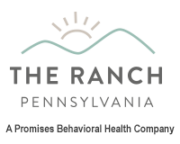It is no exaggeration to say an epidemic of heroin use has swept across Pennsylvania. Over the past few years, there have been overdoses, distribution busts, more people seeking assistance for heroin addiction, and countless families struggling to save their loved ones from the heroin plague. In one weekend, eight people in a single county overdosed in just over an hour. Cities across the state have seen a record number of overdoses in 2015 — and law enforcement is struggling with how to address the issue. One way could be to administer Naloxone, a narcotic that may be used to reverse the effects of heroin when someone has overdosed. Also known as Narcan, the drug can be given by trained emergency medical staff when they find someone who has a heroin overdose. Essentially, it acts as an antidote to the overdose when administered quickly. How Naloxone Works Though Naloxone appears to work miracles, it is not magic. It works by blocking the receptors for opoids such as heroin and Vicodin, preventing them from affecting the body or brain. Medical personnel used to be required to inject the drug into a muscle or funnel it through an IV, but now it can be used as a spray that must be inhaled. Naloxone & Heroin Overdose As the benefits of Naloxone have become clear, many have seen it as a potential Band-Aid for the heroin problem in Pennsylvania. While it will not cure the epidemic, it can be used to save lives, as has been seen in some counties in the state where police officers have begun carrying the drug. In Lancaster County, for example, police began carrying Naloxone under Act 139, which authorizes them to administer the drug to people who have overdosed on heroin. This has life-saving potential. Police often arrive to a scene first, before even emergency medical personnel. The sooner Naloxone is administered, the better the chance the person will live. It takes only a minute for Naloxone to begin working. Some PA police departments still have not started carrying Naloxone, despite its life-saving properties. The cost should not be a barrier to dispensing Naloxone, however. Though it costs $80 per dose, Capital Blue Cross has offered to cover the expense so police departments can get access to this miracle drug. Addressing a Heroin Addiction The heroin overdoses in PA are startling, and The Ranch PA may be able to help. We offer assistance with fighting addiction and getting on the path to sobriety. Photo via

